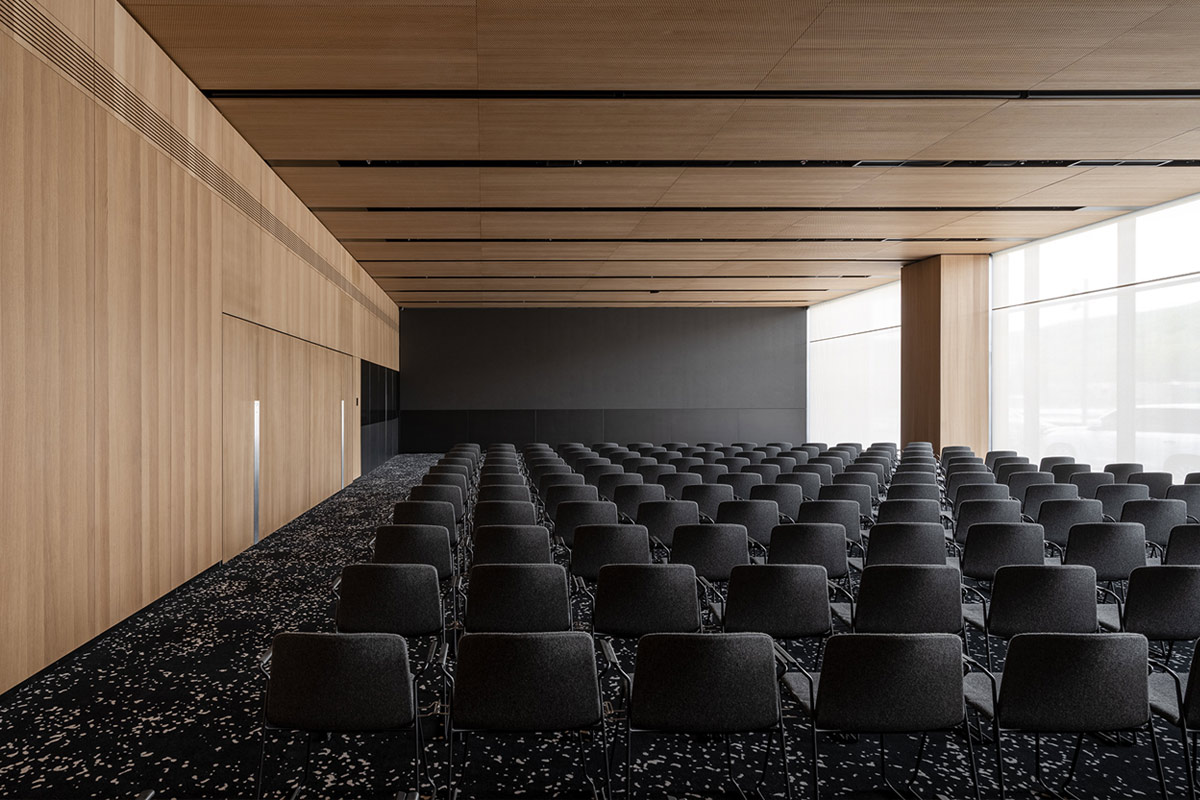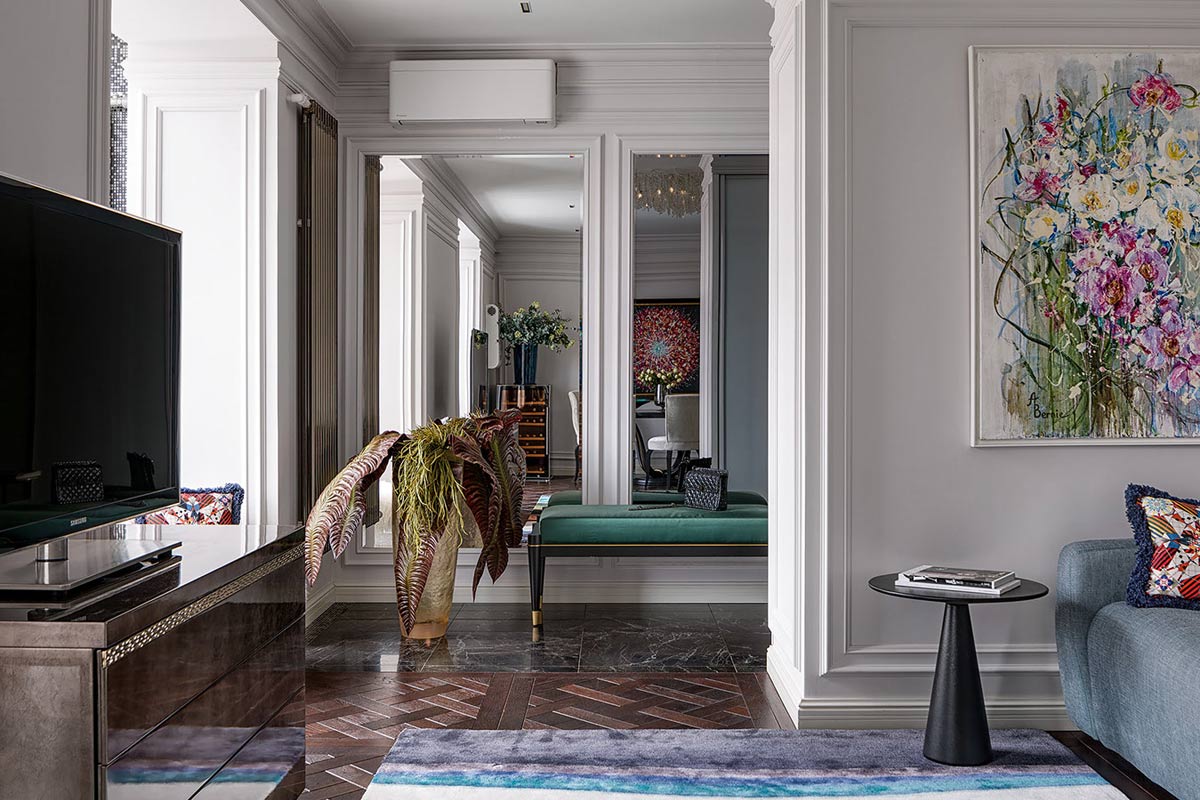As global awareness of environmental issues grows, sustainable interior design is gaining traction. Beyond being a mere trend, eco-friendly practices are transforming the way we approach both residential and commercial spaces. By 2025, prioritizing sustainability involves crafting beautiful interiors while minimizing environmental impact through thoughtful choices in materials and methods. Let’s delve into the key trends in sustainable interior design and their impact on the industry.
1. Eco-Friendly Materials
The cornerstone of sustainable interior design is the selection of materials. Whether designing a luxury apartment or a commercial office in Dubai, choosing renewable, recycled, or responsibly sourced materials is essential for eco-friendly design.
Bamboo and Cork: These rapidly renewable plants offer excellent alternatives to traditional wood flooring. Bamboo is not only durable but also versatile, making it suitable for both residential and commercial interiors.
Recycled and Upcycled Materials: The use of recycled wood, metal, and plastics is becoming increasingly common. Designers are integrating repurposed materials, such as reclaimed wood for flooring or furniture, adding a rustic and eco-friendly charm to contemporary interiors.
Natural Fabrics: Organic cotton, hemp, and linen are replacing synthetic fabrics in upholstery and drapery. These natural fibers are free from harmful chemicals, contributing to improved indoor air quality.
2. Energy-Efficient Lighting
Lighting is essential in interior design, influencing both aesthetics and energy consumption. By 2025, eco-friendly lighting options will be a key focus for interior design firms worldwide, particularly in areas like Dubai where energy efficiency is vital.
LED Lighting: LED bulbs use up to 80% less energy than traditional bulbs and have a longer lifespan. They are perfect for both residential and commercial interiors, offering energy savings along with versatile lighting options.
Smart Lighting Systems: The integration of smart lighting systems that adjust according to natural light levels or occupancy can greatly decrease energy consumption. These systems are becoming the norm in contemporary homes and offices.
3. Sustainable Furniture
Furniture is a vital component of any interior design project, and choosing sustainable options can significantly lower a space’s carbon footprint.
Locally Sourced Furniture: Opting for furniture created by local artisans or companies allows interior design services to reduce carbon emissions linked to long-distance shipping. The demand for locally crafted furniture that blends style with sustainability is on the rise in Dubai’s interior design market.
Modular and Multifunctional Furniture: Modular furniture that can be easily reconfigured or serve multiple purposes is becoming increasingly popular in both residential and commercial spaces. This approach reduces the need for multiple pieces and helps minimize waste.
4. Indoor Plants and Green Walls
Integrating nature indoors is another eco-friendly trend that has become popular in sustainable interior design. Adding greenery to interiors not only boosts air quality but also enhances the overall aesthetic of the space.
Indoor Plants: Whether in small residential areas or large commercial spaces, plants are being incorporated to create calming, eco-friendly environments. Indoor plants not only purify the air but also help reduce stress, making them essential in sustainable design.
Living Walls: Often referred to as green walls, these vertical gardens are especially favored in commercial interior design. Living walls assist in regulating indoor temperature, minimizing noise, and providing visually striking backdrops.
5. Water Conservation Features
Water conservation is another critical aspect of sustainable design, especially in regions like Dubai where water scarcity is a concern.
Low-Flow Fixtures: Installing low-flow faucets, showerheads, and toilets is an effective way to decrease water consumption in both residential and commercial spaces.
Greywater Systems: Greywater recycling systems that repurpose water from sinks and showers for irrigation or toilet flushing are becoming increasingly popular in sustainable design projects.
6. Sustainable Building Certifications
For interior design firms committed to sustainability, obtaining green building certifications like LEED (Leadership in Energy and Environmental Design) or WELL is becoming a key focus. These certifications not only encourage environmentally friendly practices but also enhance the marketability of both residential and commercial properties.
LEED Certification: LEED advocates for sustainable building practices that emphasize energy efficiency, water conservation, and the use of eco-friendly materials.
WELL Certification: This certification aims to enhance human health and well-being through design strategies that improve air quality, natural light, and thermal comfort.
7. Smart Home Technologies
Technology is vital for promoting sustainability in interior design. Smart home systems that manage lighting, heating, and cooling can greatly lower energy use while enhancing comfort and convenience for residents.
Smart Thermostats: Devices like smart thermostats adapt to a user’s habits and adjust the temperature automatically, helping to minimize unnecessary energy consumption.
Energy Monitoring Systems: Smart systems that provide real-time monitoring of energy use enable homeowners and businesses to track their consumption and make informed decisions to reduce it.
We contacted MDFITOUT for our interiorr designing services and we were amazed by their work culture and ability to provide excellent results
Mark Johnson
Final Thoughts
As we approach 2026, the demand for sustainable interior design services is expected to rise, especially in eco-conscious markets like Dubai. Both residential and commercial interior design firms are increasingly adopting eco-friendly materials, energy-efficient systems, and innovative practices to craft spaces that are not only aesthetically pleasing but also environmentally responsible. Sustainable interior design is not just a trend; it is essential for the future of our planet.
By collaborating with an interior design company that prioritizes sustainability, clients can make sure their homes and businesses support a greener, healthier planet.



